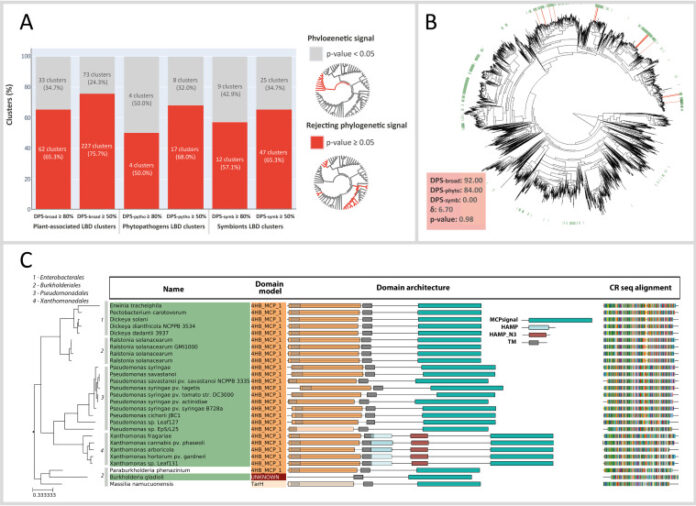Chemosensory pathways are among the most abundant prokaryotic signal transduction systems, allowing bacteria to sense and respond to environmental stimuli. Signaling is typically initiated by the binding of specific molecules to the ligand binding domain (LBD) of chemoreceptor proteins (CRs). Although CRs play a central role in plant-microbiome interactions such as colonization and infection, little is known about their phylogenetic and ecological specificity. Here, we analyzed 82,277 CR sequences from 11,806 representative microbial species covering the whole prokaryotic phylogeny, and we classified them according to their LBD type using a de novo homology clustering method. Through phylogenomic analysis, we identified hundreds of LBDs that are found predominantly in plant-associated bacteria, including several LBDs specific to phytopathogens and plant symbionts. Functional annotation of our catalogue showed that many of the LBD clusters identified might constitute unknown types of LBDs. Moreover, we found that the taxonomic distribution of most LBD types that are specific to plant-associated bacteria is only partially explained by phylogeny, suggesting that lifestyle and niche adaptation are important factors in their selection. Finally, our results show that the profile of LBD types in a given genome is related to the lifestyle specialization, with plant symbionts and phytopathogens showing the highest number of niche-specific LBDs.
